Mandalay: Cattle; Mandalay Hill, Sutaungpyei Paya, Kuthodaw Paya, Shwenandaw Kyaung, Gold Leaf, Mahamuni Paya; Craft Workshops.
Myanmar's second largest city (after Yangon) is Mandalay, currently home to a population of around one million. Though located in a part of Myanmar that seated many royal capitals over the centuries, Mandalay itself was capital only from 1861 to 1885 (when the British overthrew the last king). Nevertheless, owing to its strategic location in central Myanmar, Mandalay enjoys its status as an economic and cultural hub of the country. The 19th century palace was destroyed during World War II, though a replica was constructed in the 1990s. Because the replica was built largely with forced labor, many tourists choose not to visit it, and for that reason as well as its lack of authenticity, we also decide to skip it.
Cattle and Oxen -- Near the Airport
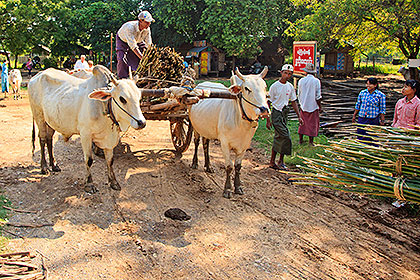
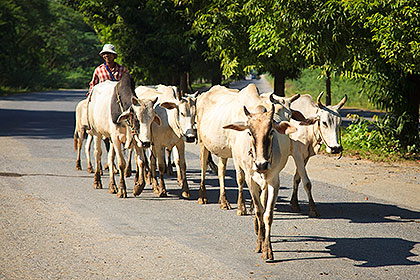
Just minutes after our jet lands at Mandalay, on a road between the airport and the city, we encounter farmers driving cattle, and oxen hauling bamboo poles, A majority of Burmese people still make their living from the land, without much help from machinery.
Mandalay Hill and Sutaungpyei Paya (Pagoda)

Just north of Mandalay City is Mandalay Hill. rising 760 feet from the flatlands around it. Considered sacred by Buddhists, many pagodas and temples are located on the hill and its immediate surroundings. A switchback mountain road leads jeeps half way up, after which an escalator completes the journey to the top. Alternatively, visitors can climb a stairway (bare feet required) all the way from the base. We decide to use jeeps. Above, Mandalay Hill is seen beyond a section of the moat surrounding the Mandalay Palace.

Atop Mandalay Hill, the Sutaungpyei Pagoda shines and provides a lofty platform for looking around the area. The platform is neatly finished in ceramic tiles, and the walls are clad in geometric patterns of ceramics and jewels that dazzle the eyes.






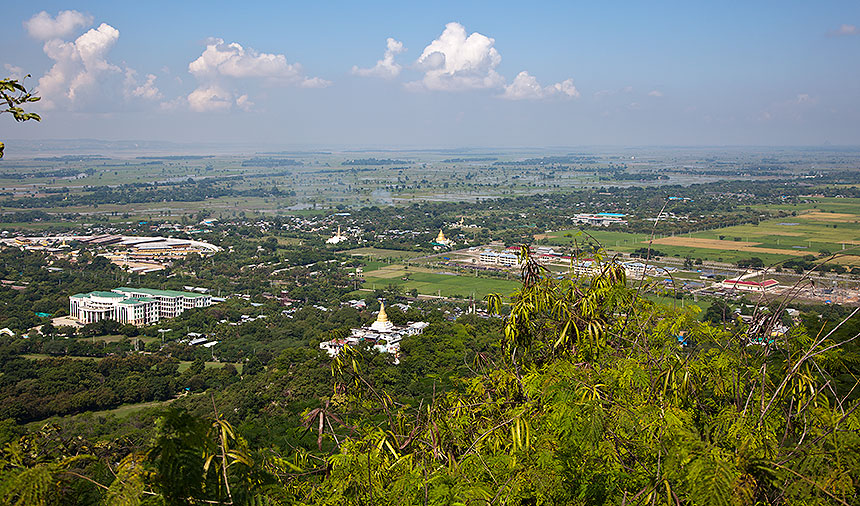
This view looks northwest from Mandalay Hill. The buildings with green roofs are probably government buildings. Beyond them, the complex looking much like a railroad roundhouse is the immense Mandalay Jail.
Kuthodaw Paya
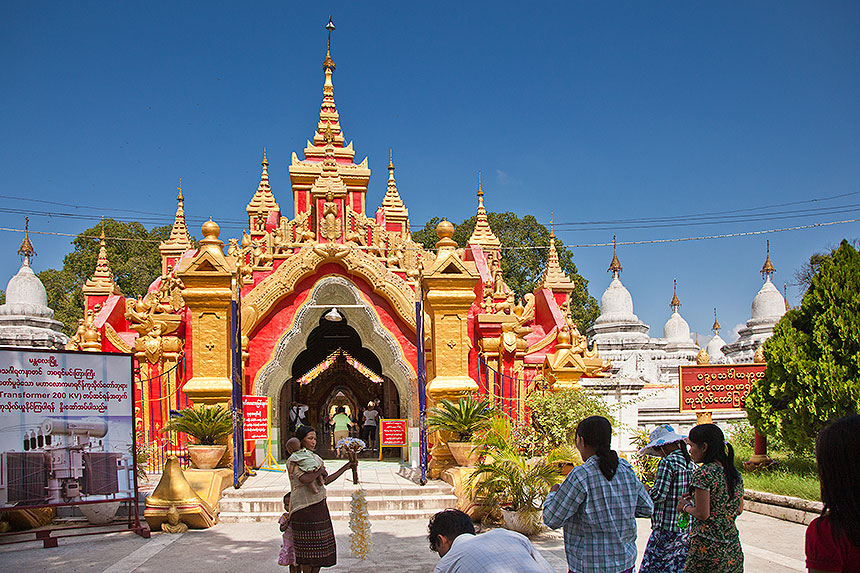
Sometimes dubbed "the world's biggest book", the Kuthodaw Pagoda is surrounded by 729 small white stupas, each of which contains an inscribed marble slab. Collectively, the 729 slabs contain the entire Tripitaka (Buddhist scriptures). It is estimated that a person would need 450 8-hour days to read the entire book.
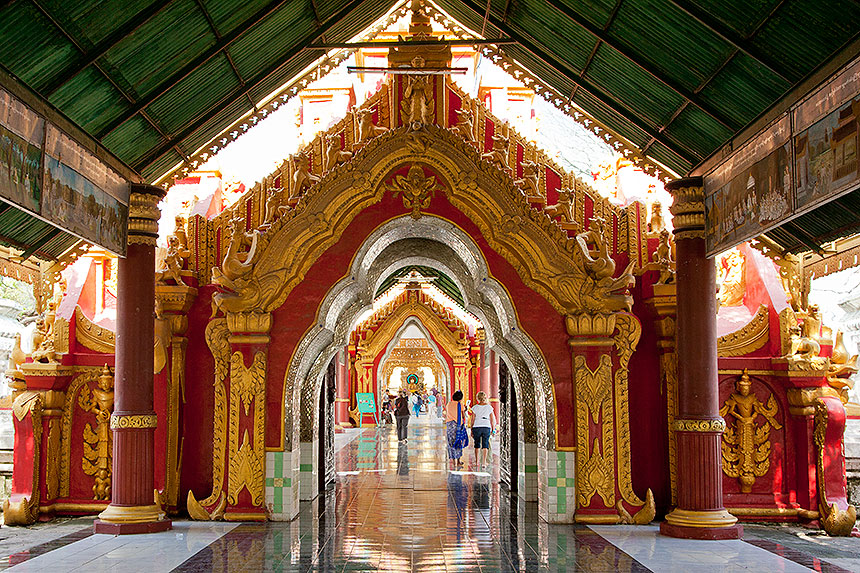

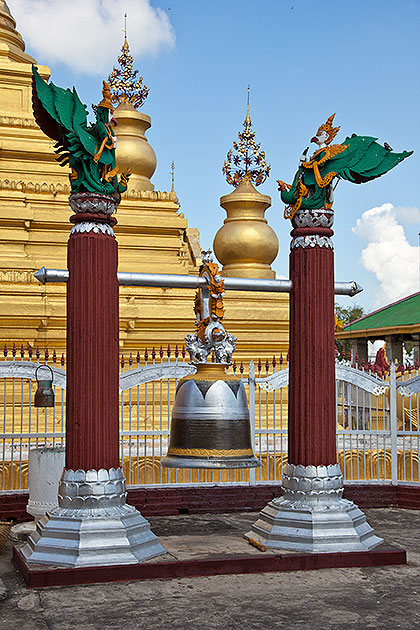
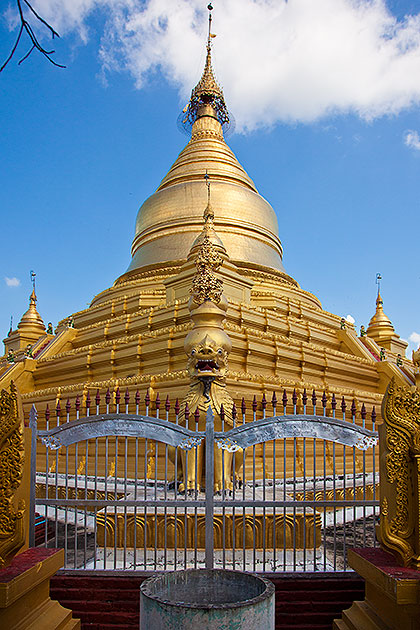
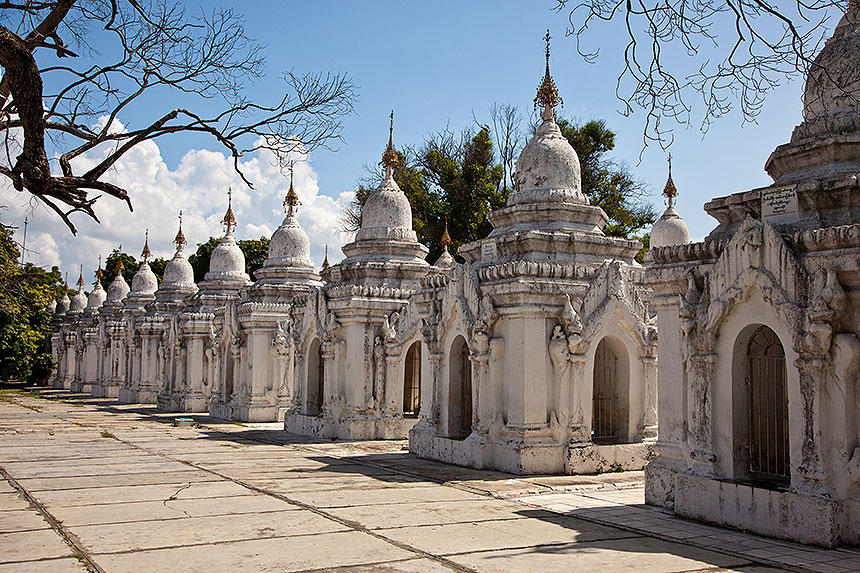
Above, a few of the 729 stupas surrounding the Kuthodaw Pagoda. Below, models of the pagoda complex.
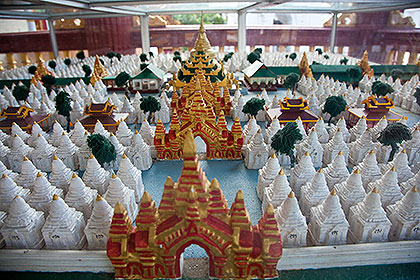
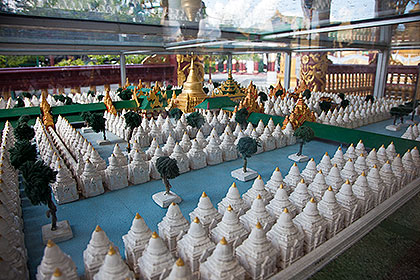
Shwenandaw Kyaung (Golden Palace Monastery)

This wooden monastery once stood within the palace walls. Because it was disassembled and relocated in 1880 it escaped destruction during World War II, when bombing leveled the rest of the palace. Originally the gilded interior was decorated with glass mosaics. Many of the intricately carved wooden panels survive and may be seen in the monastery (some examples below).
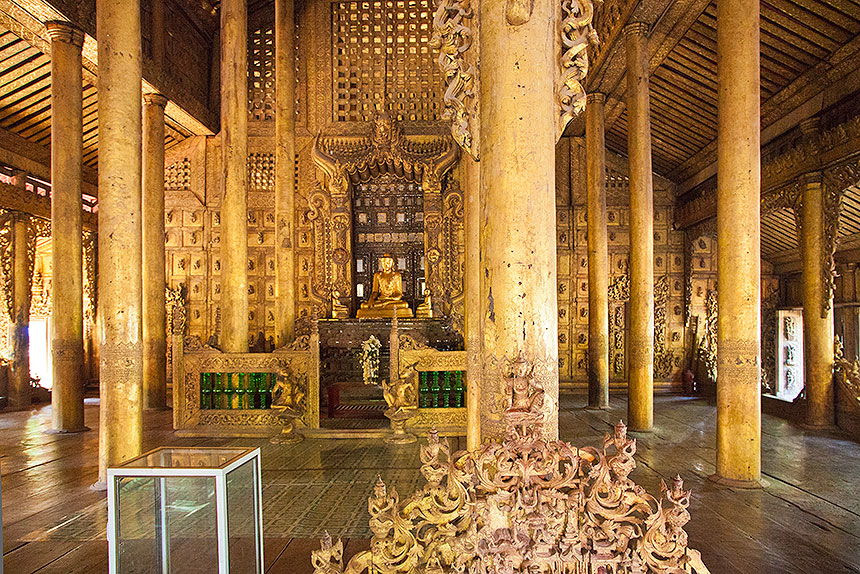
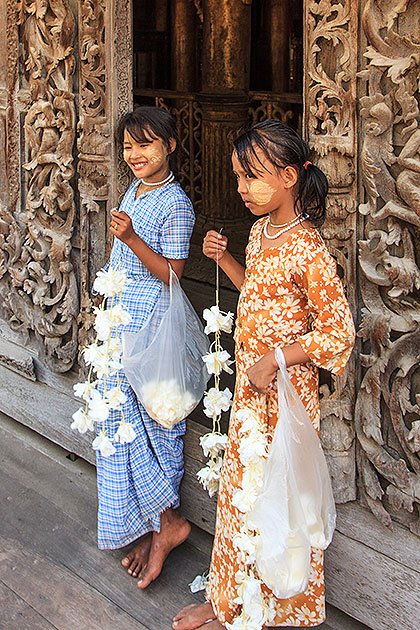
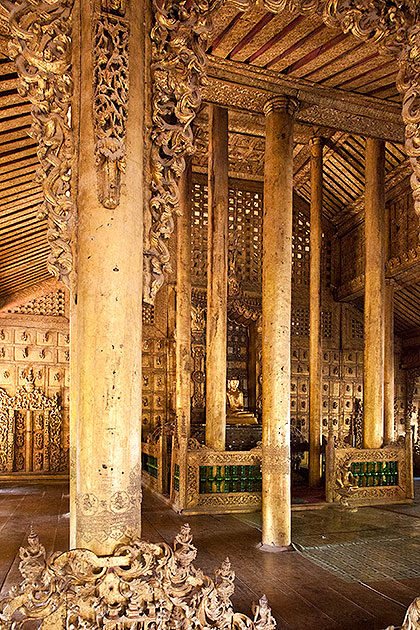
Making Gold Leaf
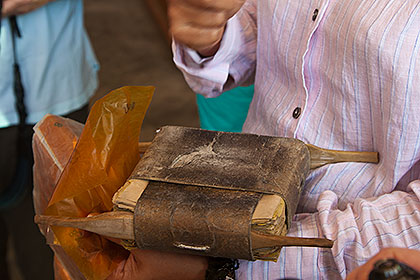
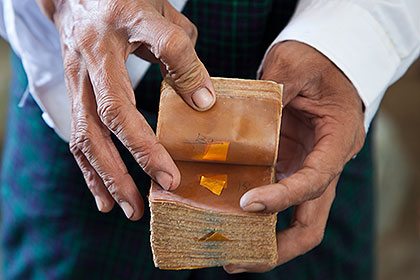
We visit a gold leaf workshop to witness the process of making it. Basically small,very thin, sheets of gold are interleaved between layers of paper or leather and pounded until they get larger (but thinner). Resulting sheets are cut into smaller pieces and the process is repeated multiple times, until the ultimate thinness is produced. Those gold leaves are then packaged for sale. There is a continual demand for gold leaf by the Burmese people, who apply it to Buddha statues as acts of devotion.
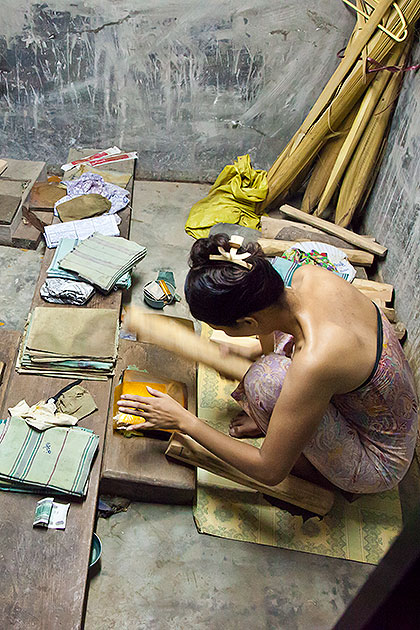
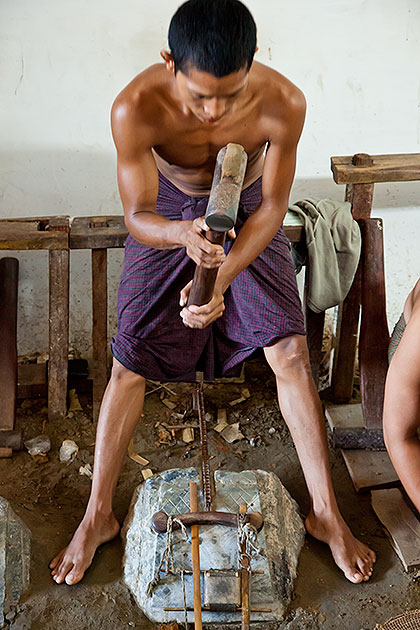
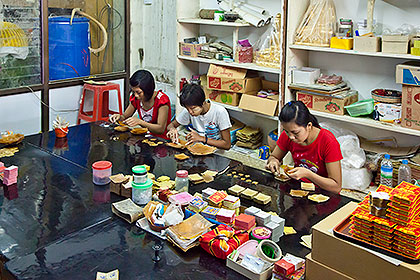
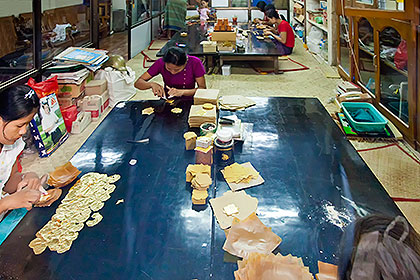
Mahamuni Paya (Mahamuni Temple)
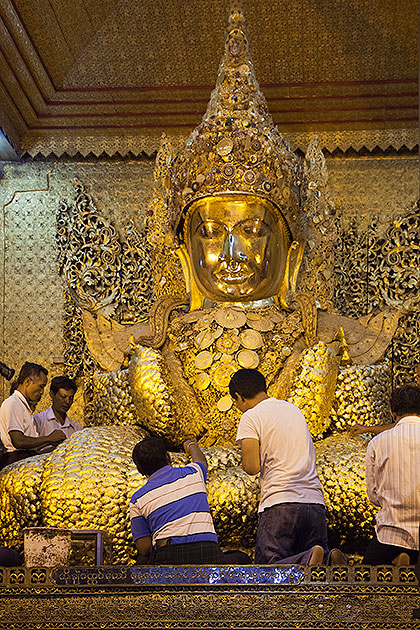
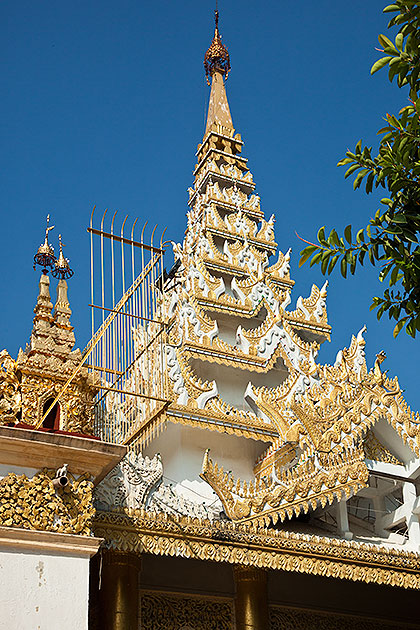
This is Mandalay's most holy Buddhist site. The original crimson and gold temple was built in 1784 by King Bodawpaya, but it was destroyed by fire in 1884, and the present structure replaced it. The site's particular significance comes from the 13-ft. Buddha statue, cast from bronze and now coated by a 6-inch layer of gold built up by applications of gold leaf by worshipers. The Buddha image was brought here from Mrauk-U (in the Rakhine State) in 1784 (when the original temple was built), and was believed to be very old already at the time. Some even believe it was created in the likeness of Buddha himself during his visit in 554 BC.
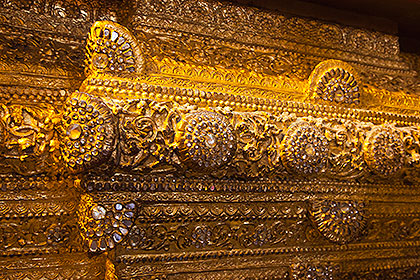
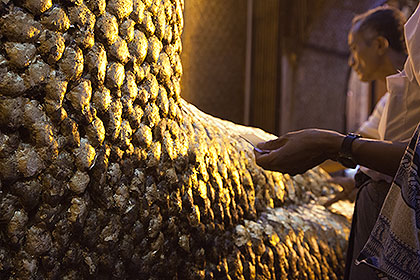
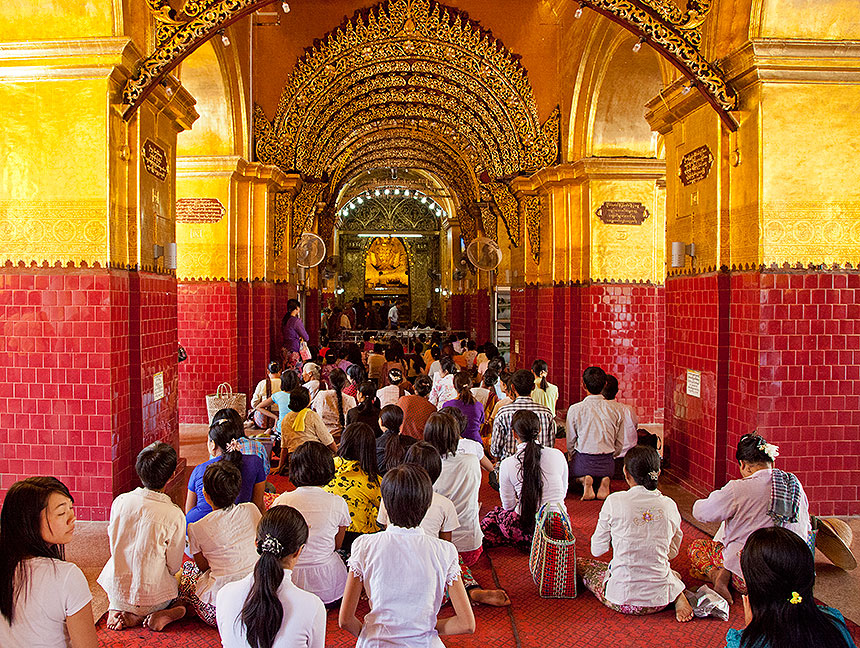
Workshops and Crafts
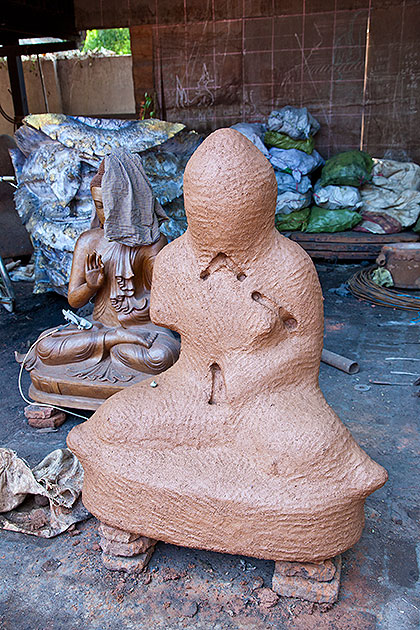
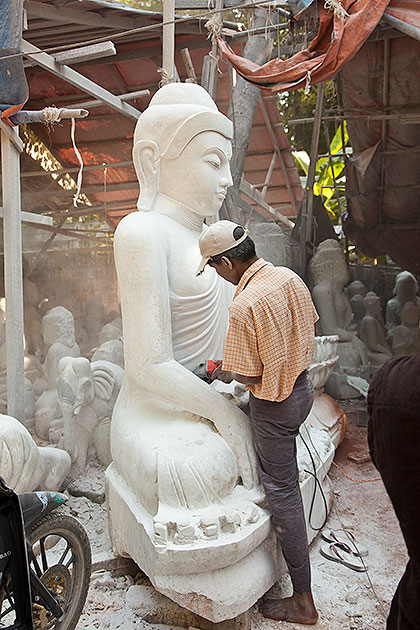
We visit a few of Mandalay's many craft workshops. Above: marble carving and bronze casting.
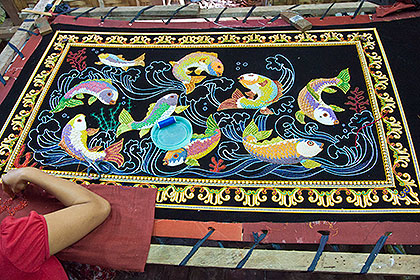
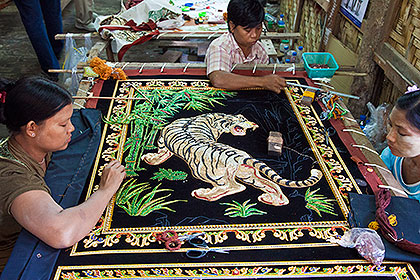
Tapestry making.
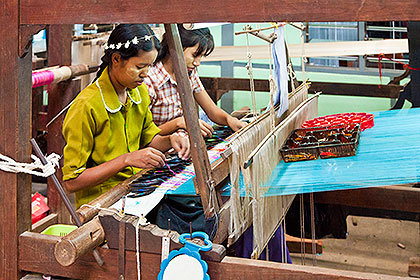
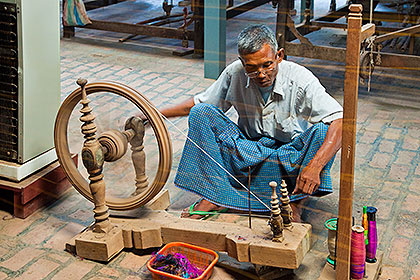
Silk weaving.